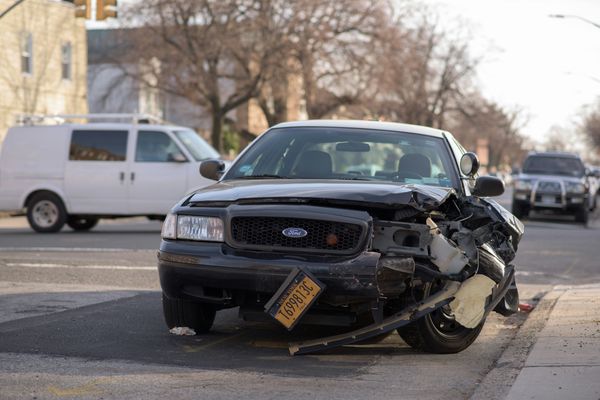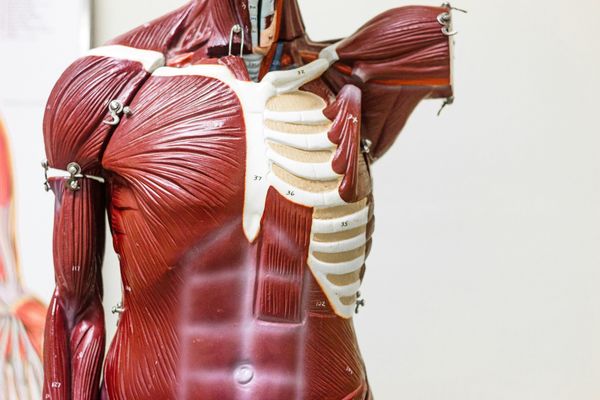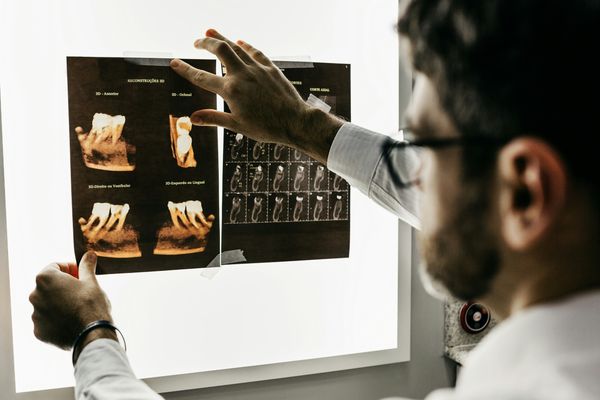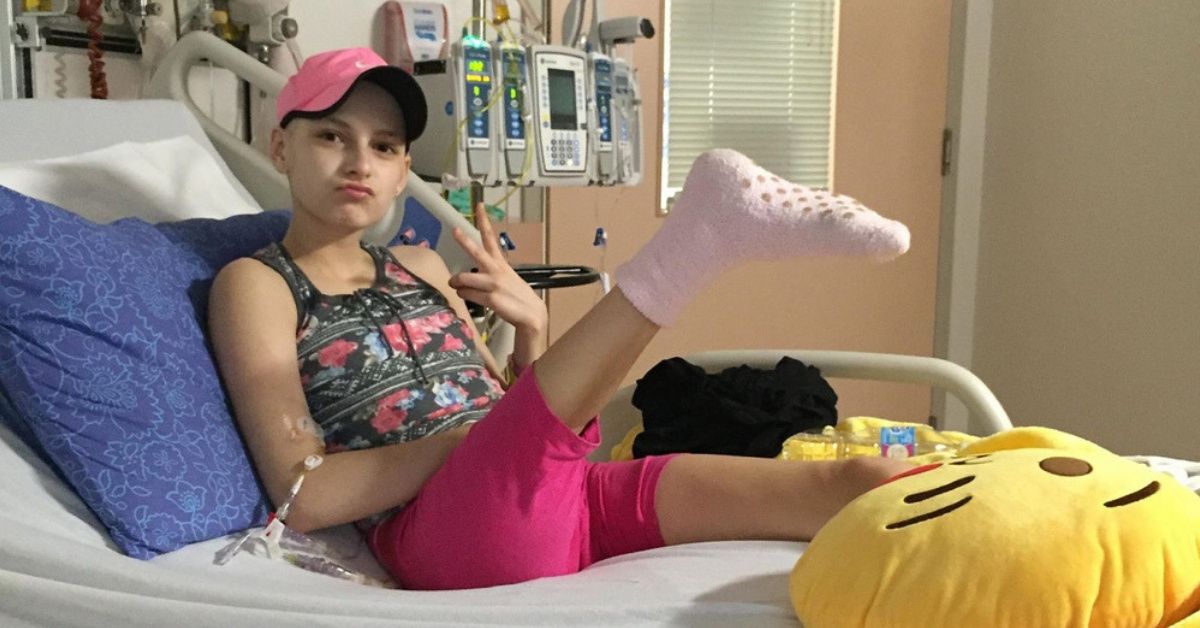A teenage gymnast who developed a malignant orange-sized tumor above her right knee opted for radical surgery to remove her foot and refit it backwards—so she could continue with her beloved sport.
Diagnosed with osteosarcoma—a form of bone cancer—in 2016, Emma Neagu, now 14, of Toronto, Canada, was terrified it would mean she could no longer pursue the hobby she loved since she was little.
So, when she was offered a groundbreaking procedure called rotationplasty, told it would give her greater mobility, she chose it—despite its odd appearance—saying:
“It looked strange, but it meant my leg would still be very functional."
She continued:
“It involved amputating part of my leg, before reattaching the ankle to the femur backwards, to act as a new knee."
“I was nervous, but I went into that operation knowing I'd made the best choice for me."
After first having intensive chemotherapy, Emma opted for rotationplasty over limb salvage surgery. Limb salvage surgery involved removing the affected bone and replacing it with a metal implant.
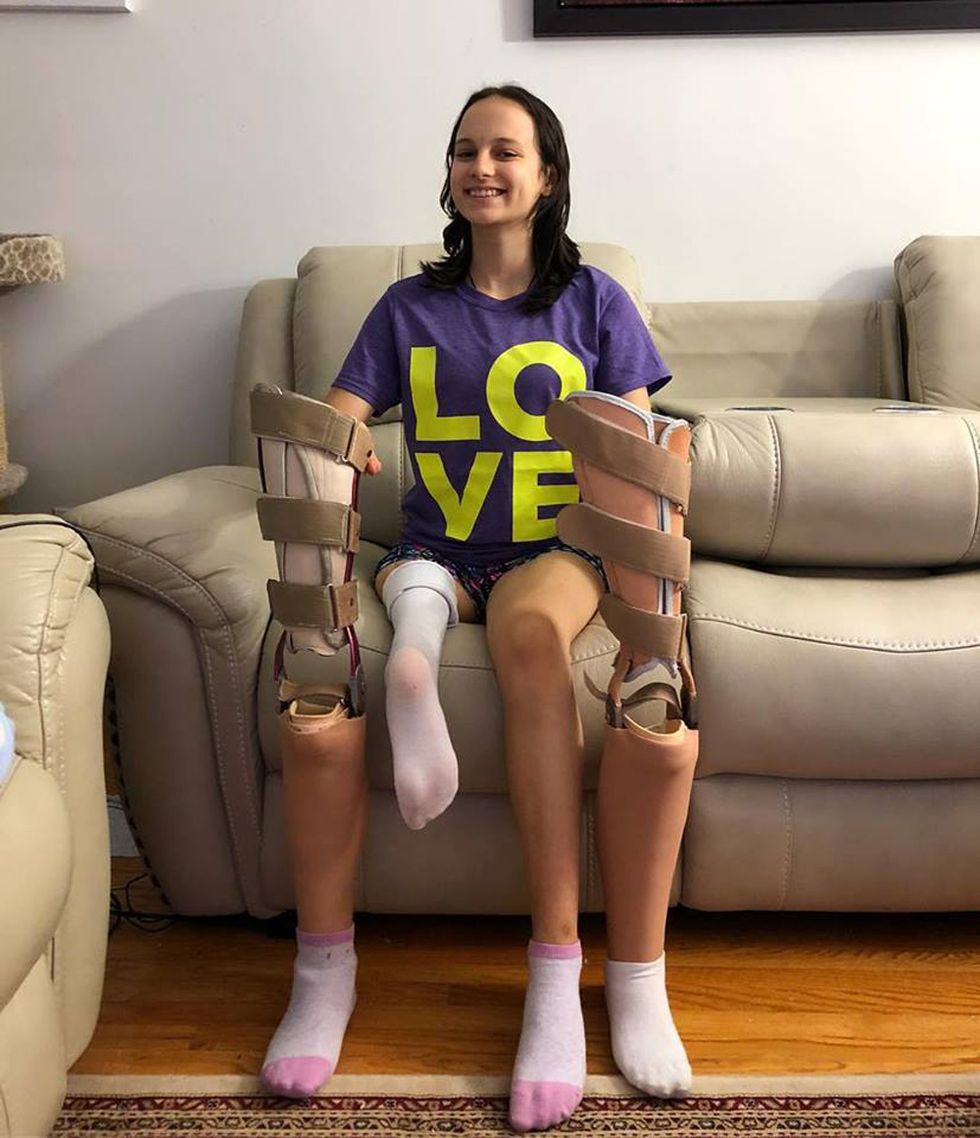
She explained:
“With the limb salvage surgery, my leg would look the same as before, as if nothing had happened, but I would have limited mobility."
“The rotationplasty definitely suited me better."
When Emma first experienced intermittent pain in her right knee in December 2015, until then the picture of health—regularly doing gymnastics and dance—she thought she had injured herself practicing.
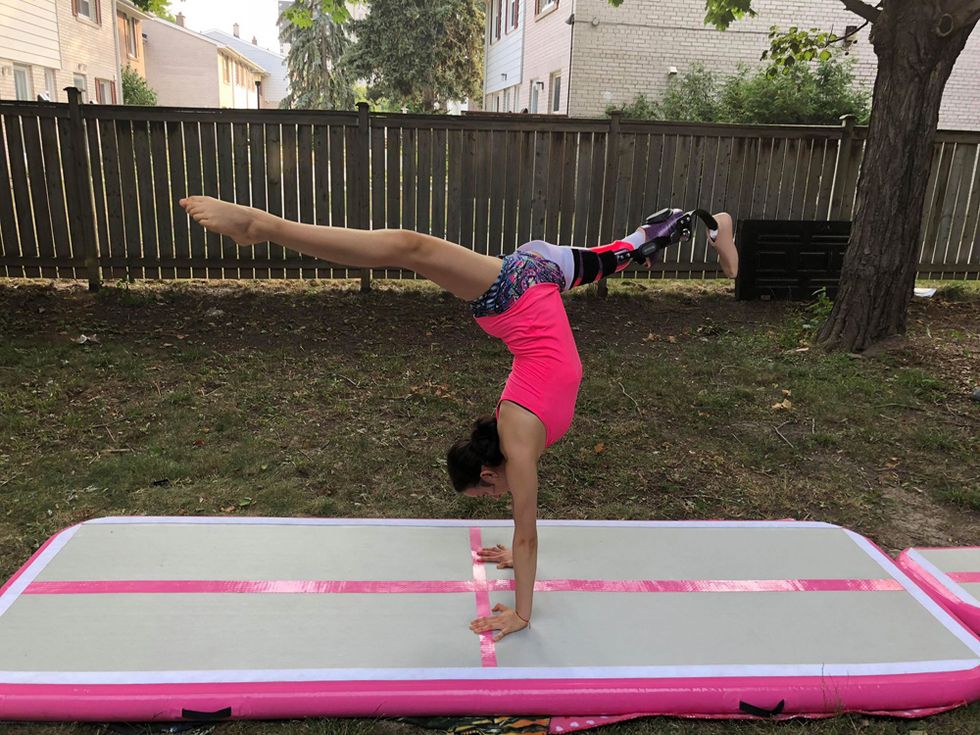
But later that month Emma, who lives with her mum Claudia, a former teacher who is currently taking a study break, truck driver dad Emil and sister Elizabeth, eight, fell and banged her knee while performing a trick and was left in agony.
She explained:
“I'd fallen before and it'd only hurt for a second or two. But this was different."
“It was so painful and swelled up so it looked all bumpy. I later found out I'd landed almost right where the tumor was."
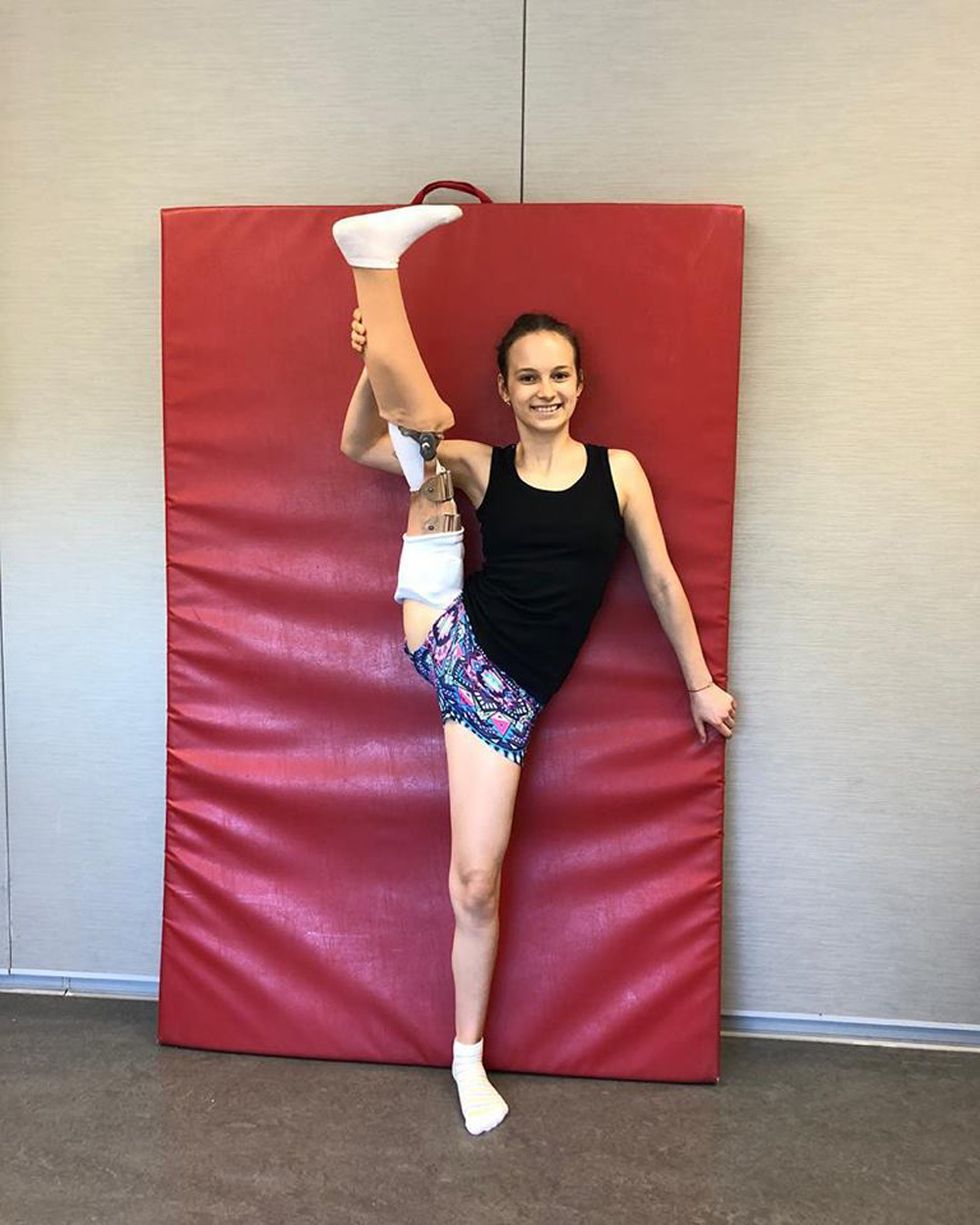
Concerned when the swelling had still not eased after two days, Emma visited a doctor, but was told she had simply sustained a sports injury—so, in spite of her pain, she carried on training.
She added:
“The word 'cancer' literally never crossed my mind."
Over the next month, her pain continuing, Emma went back to the doctor. They performed a scan and sent it off to be examined.

Receiving the results at Toronto's Sickkids Hospital, she was told she had osteosarcoma.
The young gymnast said:
“They didn't out-rightly use the word cancer, but my mum understood what they were saying and explained it to me."
“They said to me that it wasn't an injury, or because of gymnastics, and that it wasn't my fault, nor had I done anything to cause it."
Emma added:
“I was praying they were wrong, because before that, I'd been the healthiest kid. It was very hard to hear I'd lose my long brown hair, too, and I was terrified what it'd mean for my gymnastics. I thought I'd never do a flip again."
In March 2016, after further tests revealed the cancer had also spread to her lungs, Emma began her treatment, which entailed nine months of chemotherapy – the side effects of which included nausea, mouth sores, headaches and hair loss.
She also had surgery to remove the cancerous spots from her lungs, as well as the 12 hour rotationplasty operation, which took place at Sickkids.

Speaking of the June 2016 procedure, Emma recalled:
“I remember having surgeons crowding around me, but they were being very gentle and kind. I was showing them how I wanted my leg to be when I came round."
“Waking up, I knew what to expect and had accepted my new leg. It looked weird, but it was the right choice for me."
After five nights in hospital recovering, Emma was sent home, where she relied on a wheelchair to get around as she waited for her prosthetic leg to be fitted.
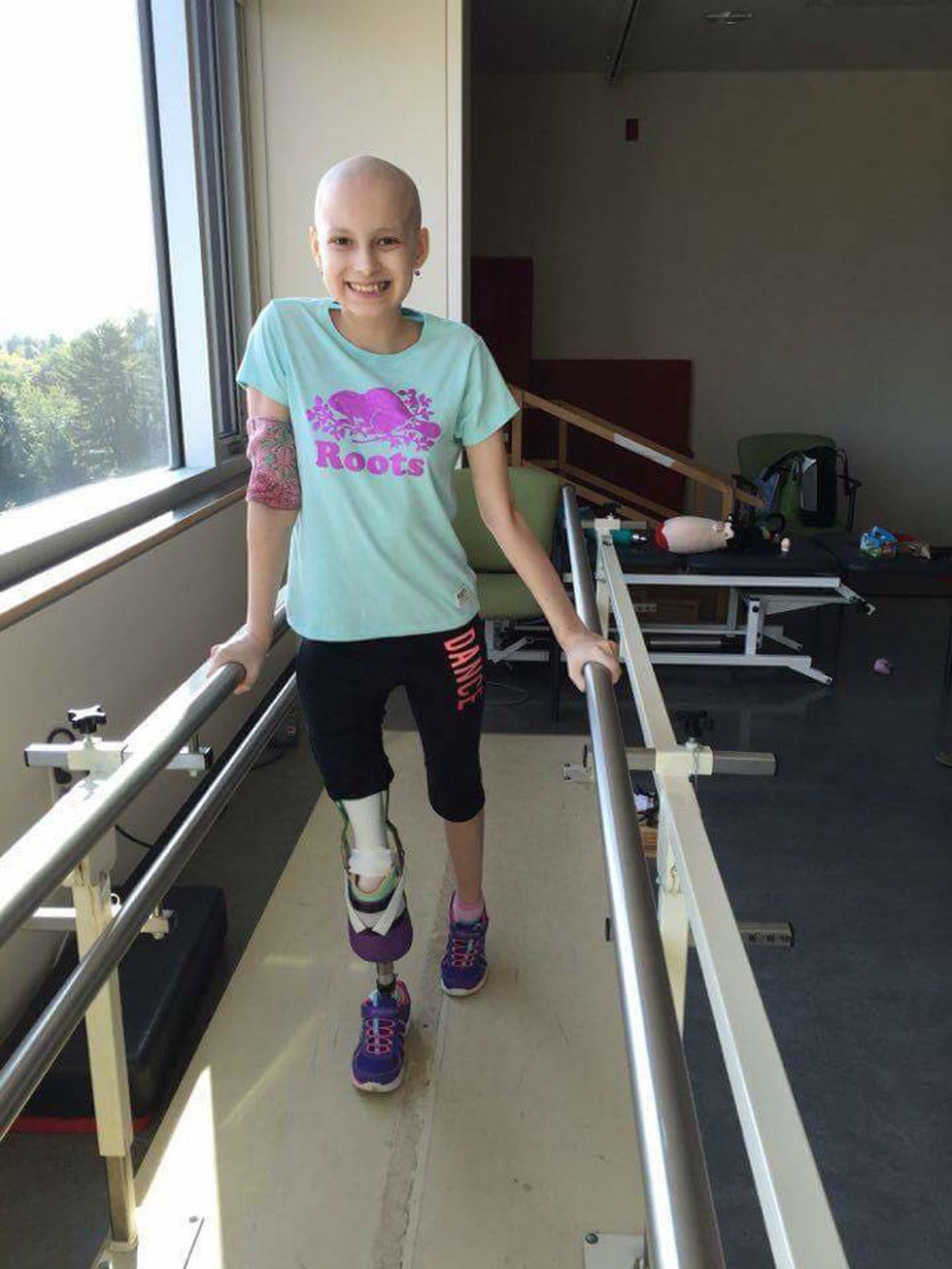
She added:
“I couldn't put any weight on it at first, so there was a lot of resting. It took a lot to get used to the fact part of my leg was backwards. Even pointing and flexing my toes was hard to wrap my mind around."
After receiving her prosthesis in September 2016, Emma spent the next 18 months slowly reintroducing herself to gymnastics—finishing her chemo in December 2016.
After being declared cancer free, she sadly relapsed in December 2017, when a routine scan detected new spots on her lungs.
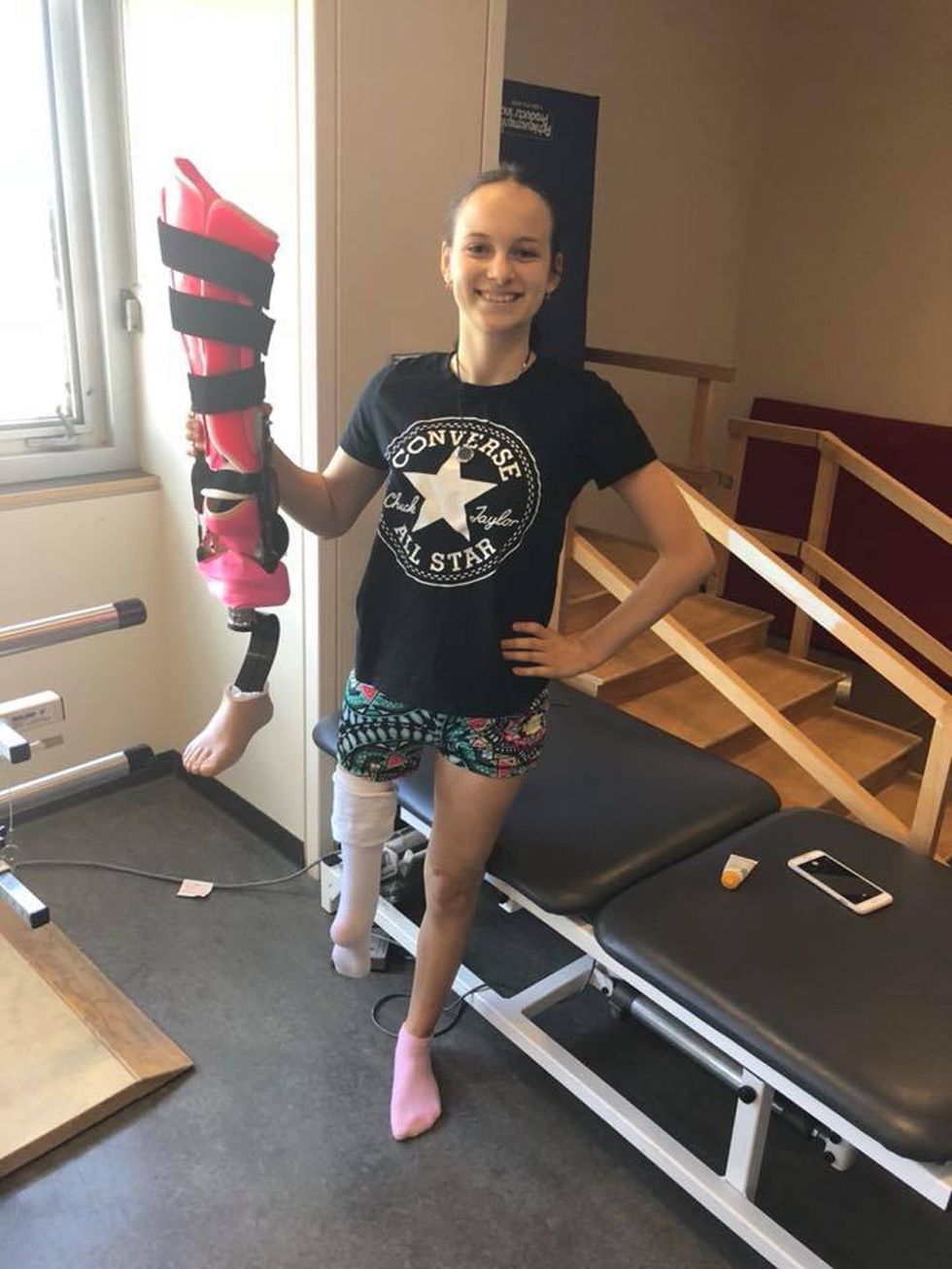
But now, following more surgery to remove a small part of the affected organ, she is in remission.
And, back performing the same gravity-defying tricks as before, she is using her gymnastics as a way of inspiring others to pursue their dreams. Emma regularly posts videos and pictures about her journey to Instagram
Emma said:
“I want other people to know that, so long as you believe and put your mind to it, you can achieve anything you want."
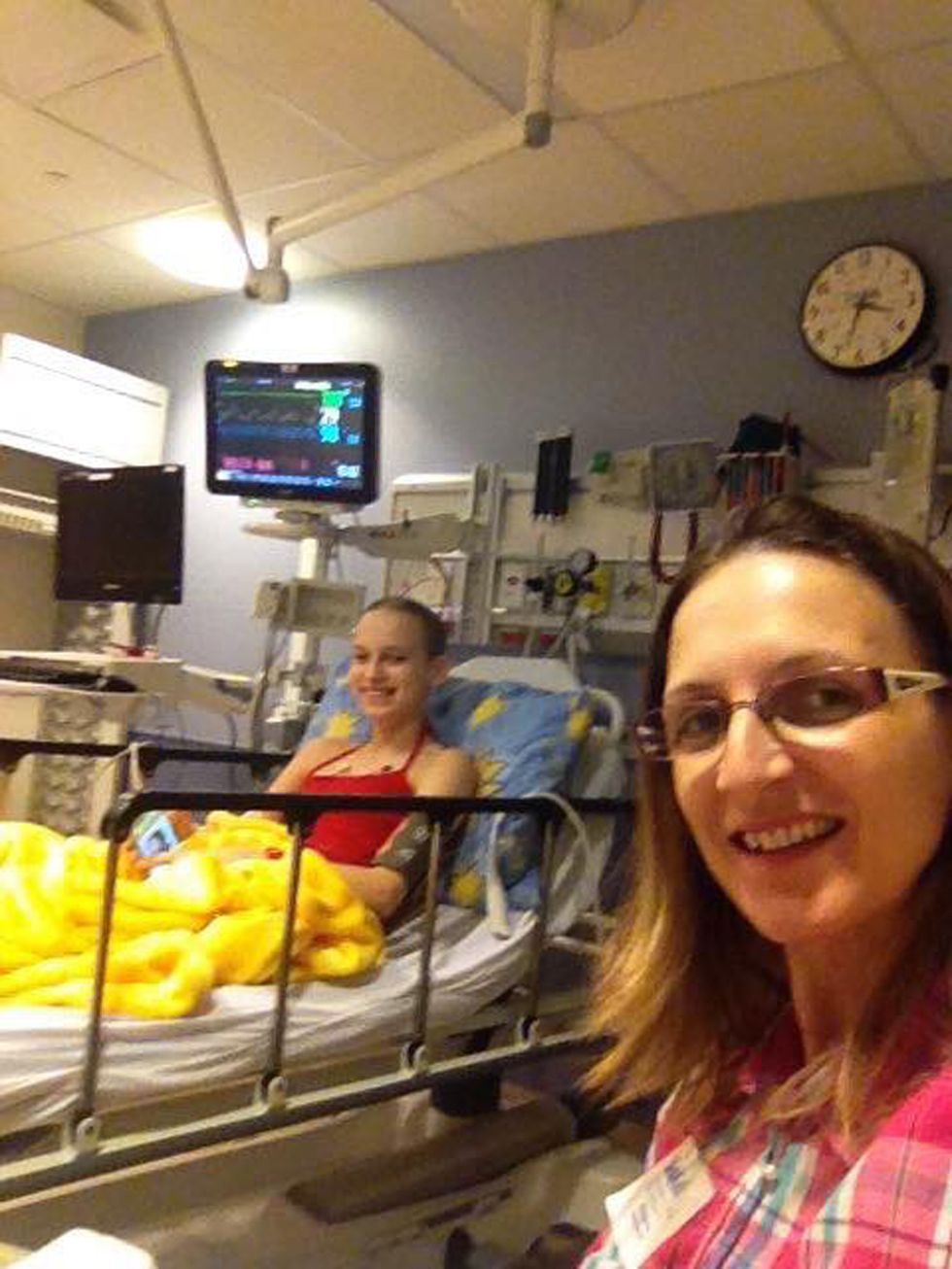
Emma's mum Claudia added:
“I will never forget the doctor explaining the surgery choices and Emma opting for the rotationplasty."
“I said, 'But they can save both legs. Why are you choosing to cut one off?' As her mum, the idea scared me to think about."
“But she told me, 'I don't need two identical legs. I just want to be able to do what I love.' The doctors were all very supportive of her choice, too."

Claudia added:
“Emma was so positive throughout her treatment. I've never seen anyone handle something that difficult like it."
“The relapse was emotional, and she now has a lot of anxiety around scans, but her incredible mindset has got her through this. From the start, she was determined to fight. And that's what she has done."
A version of this article originally appeared on Press Association.
 COMICSANDS
COMICSANDS percolately
percolately georgetakei
georgetakei secondnexus
secondnexus george's picks
george's picks



